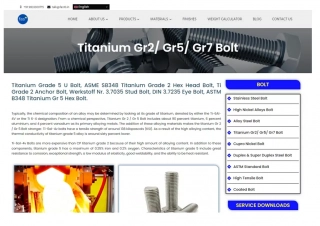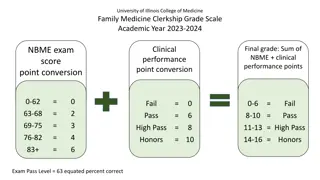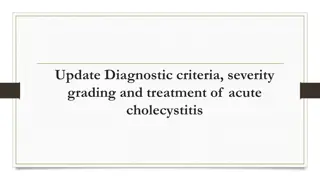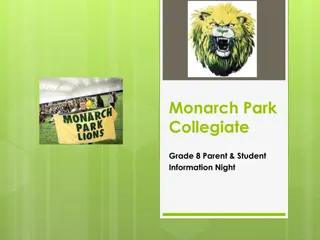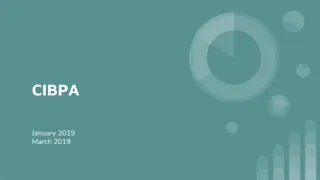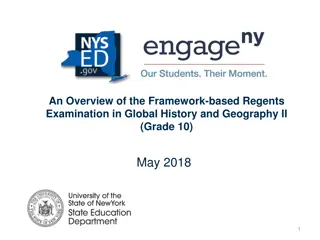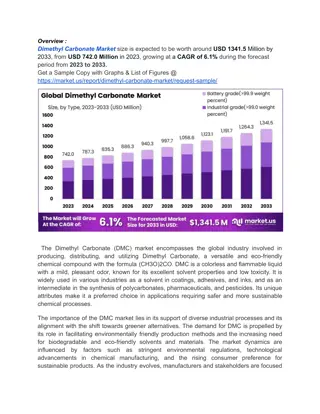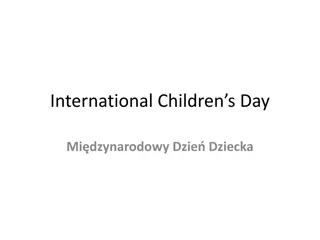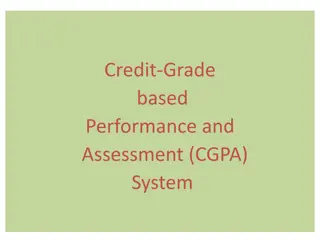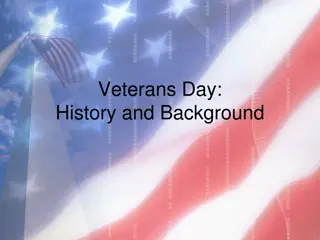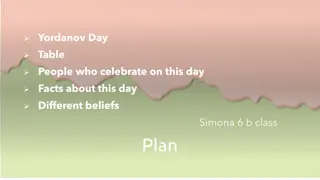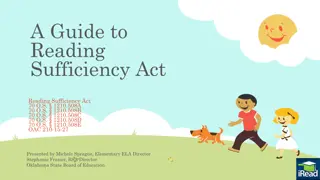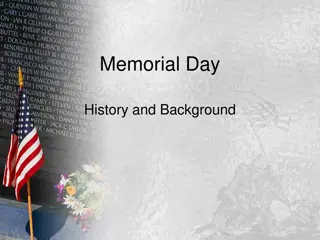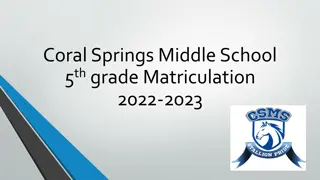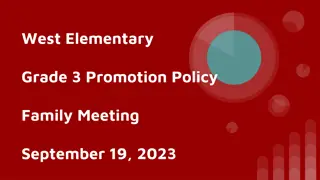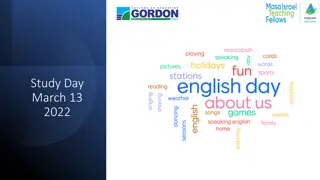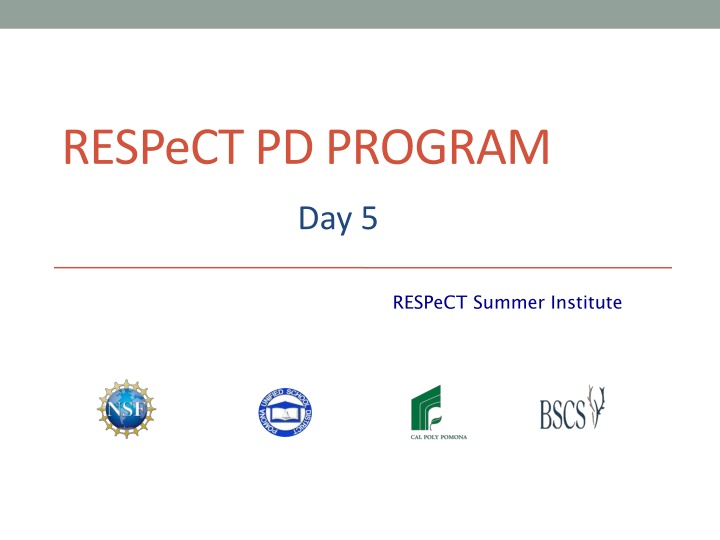
Exploring Science Content Storylines through SCSL Strategy
Dive into the intricacies of the Science Content Storyline Lens (SCSL) and its importance in creating coherence in science education. Learn how to trace matter and energy in food, analyze lesson plans using SCSL, and engage in reflective practices for effective teaching and learning in science content. Embrace norms that foster collaboration and critical thinking among participants, enhancing the overall learning experience.
Download Presentation

Please find below an Image/Link to download the presentation.
The content on the website is provided AS IS for your information and personal use only. It may not be sold, licensed, or shared on other websites without obtaining consent from the author. If you encounter any issues during the download, it is possible that the publisher has removed the file from their server.
You are allowed to download the files provided on this website for personal or commercial use, subject to the condition that they are used lawfully. All files are the property of their respective owners.
The content on the website is provided AS IS for your information and personal use only. It may not be sold, licensed, or shared on other websites without obtaining consent from the author.
E N D
Presentation Transcript
RESPeCTPD PROGRAM Day 5 RESPeCT Summer Institute
Agenda for Day 5 Day-4 reflections Focus questions Review strategy 6: use and apply What Is the Science Content Storyline Lens? Introducing SCSL strategy A Lesson analysis: SCSL strategy A Lunch Content deepening: food webs Summary, homework, and reflections
Trends in Reflections Lesson Analysis Science Content Learning
Norms for Working Together: The Basics Purpose: Build trust and develop a productive study group for all participants. The Basics Arrive prepared and on time; stay for the duration; return from breaks on time. Remain attentive, thoughtful, and respectful; engage and be present. Eliminate interruptions (turn off cell phones, email, and other electronic devices; avoid sidebar conversations). Make room for everyone to participate (monitor your floor time).
Norms for Working Together: The Heart Purpose: Build trust and develop a productive study group for all participants. The Heart of RESPeCT Lesson Analysis and Content Deepening Keep the goal in mind: analysis of teaching to improve student learning. Share your ideas, uncertainties, confusion, disagreements, questions, and good humor. All points of view are welcome. Expect and ask questions to deepen everyone s learning; be constructively challenging. Listen carefully; seek to understand other participants points of view.
Focus for the Week Content area 2: food webs Science Content Storyline Lens Strategies A, B, C, D, F, G, H, and I Video-based lesson analysis (Food Webs lessons) Food Webs lesson plans review (last day) Academic-year schedule (last day) Video recording Study-group sessions
Todays Focus Questions 1. What is the Science Content Storyline Lens (SCSL)? 2. Why is one main learning goal essential for science content storyline coherence? 3. How can we trace the matter and energy in food?
Check Your Understanding of Strategy 6 Jot down your responses to this multiple-choice quiz: 1. Use-and-apply tasks are used [before/during/after] new science ideas are introduced. 2. For difficult content ideas, students might need to practice applying new ideas in [one/two/many] different contexts. 3. [True/false]: Use-and-apply questions or activities are used primarily for student assessment at the end of a unit. 4. It s appropriate for teachers to ask [elicit/probe/challenge] questions during a use-and-apply activity. 5. Teachers should [never/judiciously/always] tell students about science ideas they are missing or stating inaccurately.
Use and Apply Your Content Deepening Knowledge What data would you use to predict whether you ll see a lot of dew on the grass or on your car in the morning? Explain your thinking. To answer this question, use and apply what you learned last week about matter, molecules, and the water cycle.
Planning Science Lessons: Quick Write What is generally your thinking process when you plan your science lessons? Be prepared to share your ideas with the group.
Lesson Analysis: Focus Question 1 What is the Science Content Storyline Lens (SCSL)? What is a science content storyline, and why is it important? What is challenging about developing a science content storyline?
The TIMSS Video Study Findings and the Science Content Storyline Lens Source: TIMSS study
Lesson Analysis: Focus Question 2 Why is one main learning goal essential for science content storyline coherence?
Purpose and Key Features of Strategy A Review your SCSL Z-fold summary charts and share with a partner the purpose and key features of strategy A: Identify one main learning goal. Remember to cite passages from the STeLLA strategies booklet. Be prepared to share with the group.
A Main Learning Goal Is A big science idea that you want students to learn A big idea that shows the relationship among science ideas The focus of the lesson (or series of lessons) Stated in a complete sentence (for planning purposes) Stated by the teacher, a student, a text, or a multimedia resource A support for teacher planning
A Main Learning Goal Is NOT A topic or phrase An activity A question A performance task or objective A supporting detail, definition, or fact A student misconception or idea that isn t scientifically accurate
Definitions: One Main Learning Goal and Science Ideas 1. Read these sections in the STeLLA strategies booklet: (1) STeLLA Strategy A: Identify One Main Learning Goal, and (2) Student Ideas and Science Ideas Defined. 2. Based on these readings, what are the differences between a main learning goal and a science idea?
Practice Identifying Student Ideas and Science Ideas Identify any student ideas and science ideas in this list: 1. Energy and matter 2. Students do a role-play showing how a food web works. 3. Plants get their food by taking it from the soil. 4. Plants are producers. 5. Plants don t need food to grow; they only need water. 6. Plant the seeds just below the surface of the soil and then water them everyday. 7. How do plants get their food? 8. Some animals get their food by eating plants.
Practice Identifying Student Ideas and Science Ideas in a Class Discussion Identify one student idea and one science idea in this class discussion: T: How do you think we get the energy we need to survive? S: From exercising. SN: From resting and sleeping. SN: From food. T: Do all living things get energy from food? S: Yes. SN: No, plants get energy from water and soil. Food for thought: To avoid problems, why not require students to speak in complete sentences during science discussions?
Science Ideas That Support the Main Learning Goal Main learning goal: Plants take in sunlight, air, and water from their environment and use them to make their own food. Supporting ideas: An environment is a place where living things can get what they need to live and grow. Plants are living things. All living things, including plants, need food. Plants cannot catch their food like animals do. Plants take in water from their roots. Plants take in sunlight and air through their leaves. Plants use sunlight, air, and water to make their own food.
Practice Identifying Main Learning Goals 1. Small groups or pairs: Use the criteria in Analysis Guide A (handout 5.1 in binder) to analyze a list of candidate main learning goals related to food webs (handout 5.2: Practice Identifying One Main Learning Goal). 2. Select candidates from the list that you think are good main learning goals for the focus of the lesson and record the reasons for your choices on handout 5.2. 3. Whole group: Discuss and justify your selections.
Lesson Analysis: Strategy A Next, we ll watch a sequence of three video clips from a single lesson about food webs. Analysis question for all three clips: Does this lesson have one main learning goal? Follow-up questions: If yes, what is it? If no, what do you think is happening in the lesson?
5.1_stella_FW_belcastro__L1_c1 Lesson Analysis: Review Lesson Context, Video Clip 1 1. Read the lesson context on the video transcript (handout 5.3 in PD program binder). 2. As you watch the clip, keep the analysis question in mind: Does this lesson have one main learning goal? If yes, what is it? If no, what do you think is happening in the lesson? Link to video clip 1: 5.1_stella_FW_belcastro_L1_c1 Link to video clip 1: 5.1_stella_FW_belcastro_L1_c1
Lesson Analysis: Analyze the Video, Video Clip 1 1. Study the video transcript and write down any science ideas the students and/or the teacher put on the table. 2. Pair up and compare the science ideas you identified. Then discuss the analysis question: Does this lesson have one main learning goal? If yes, what is it? If no, what do you think is happening in the lesson? 3. As a group, discuss what the main learning goal might be. Support your answers using your analysis of the science ideas you identified.
Lesson Analysis: Review Lesson Context, Video Clip 2 1. Read the lesson context on the video transcript (handout 5.4 in PD binder). 2. As you watch the clip, keep the analysis question in mind: Does this lesson have one main learning goal? If yes, what is it? If no, what do you think is happening in the lesson? Link to video clip 2: 5.2_stella_FW_belcastro_L1_c2 Link to video clip 2: 5.2_stella_FW_belcastro_L1_c2
Lesson Analysis: Analyze the Video, Video Clip 2 1. Study the video transcript and write down any student ideas and science ideas you identify. 2. Pair up and compare the student ideas and science ideas you identified. Then discuss this question: Are these ideas consistent with the possible main learning goal you identified for video clip 1? 3. As a group, discuss the possible main learning goal for this lesson. Make sure to support your answers using your analysis of the science ideas you identified.
Lesson Analysis: Review Lesson Context, Video Clip 3 1. Read the lesson context on the video transcript (handout 5.5 in PD binder). 2. As you watch the clip, keep the analysis question in mind: Does this lesson have one main learning goal? If yes, what is it? If no, what do you think is happening in the lesson? Link to video clip 3: 5.3_stella_FW_belcastro_L1_c3 Link to video clip 3: 5.3_stella_FW_belcastro_L1_c3
Lesson Analysis: Analyze the Video, Video Clip 3 1. Study the video transcript and write down any student ideas and science ideas you identify. 2. Pair up and compare the student ideas and science ideas you identified. Then discuss this question: Are these ideas consistent with the possible main learning goal you identified for clips 1 and 2? 3. As a group, discuss the possible main learning goal for this lesson. Make sure to support your answers using your analysis of the science ideas you identified.
One Main Learning Goal? 1. Based on your analysis of these three video clips, does this lesson have one main learning goal? What do you think it is? 2. Use the criteria questions in Analysis Guide A to analyze the main learning goal identified in these clips. 3. Are there any supporting science ideas that don t closely match the main learning goal?
Examine Food Webs: Lesson 1a 1. Review the main learning goal for lesson 1a. 2. Read the main science ideas that support the main learning goal. (See column 3 in the lesson outline or column 2 in the detailed lesson plan.) 3. Included in the lesson storyline is the idea that water, carbon dioxide, and plant food are not food by the scientific definition. Why do you think this idea was included in the storyline?
FOOD WEBS SCIENCE CONTENT DEEPENING Grade 5
Unit Central Question How do living things depend on one another to get the food (matter and energy) they need to live and grow?
Content Deepening Focus Question How can we trace the matter and energy in food? Photo courtesy of Pixabay.com Photo courtesy of Pixabay.com Photo courtesy of Pixabay.com
Defining Food 1. Define food in your notebooks. 2. Which of these materials IS food? Why? Orange juice Sugar Water Vitamins Plant food (fertilizers, minerals) Seltzer water (carbon dioxide) Salt Mints 3. Which is NOT food? Why?
The Scientific Definition of Food Food is matter (building materials) that contains energy living things can use to live and grow, to heal wounds, and to keep all their parts working.
Defining Energy 1. Write your own definition of energy in your notebooks. 2. Read section 3.4 of the Food Webs Content Background Document. 3. How does the definition in the reading compare to your definition of energy?
Useful and Common Ways of Talking about Energy Many different units are used to quantify energy. The common unit in the United States is the calorie. A calorie (lowercase c) is the amount of energy required to heat 1 gram of water 1 degree Celsius. The energy content of food is measured in Calories (capital C), called dietary calories. 1 Calorie = 1,000 calories
Energy Terms Some ways to talk about energy: Potential Energy Kinetic Energy Chemical Energy Light Energy Thermal Energy
Investigation: How Can We Find Out Which Materials Are Food? Look at nutrition labels for the materials listed on the handout. Use evidence from the labels to determine whether these materials are food for humans. Material Does It Have Mass (g) (an indicator that it is Matter)? Does It Have Calories (a measure of Energy)? Is It Food by the Scientific Definition? Apple Juice Cheez-It Crackers Orange Juice Bottled Water Mints Seltzer Water (Carbon-Dioxide Bubbles in Water) Multivitamin Plant Food (Fertilizer) Sugar Salt
Content Deepening Focus Question How can we trace the matter and energy in food?
Burning Food! As you watch the video clip of food burning, think about the following questions: 1. Describe what is happening to the food matter. Where does the matter go? 2. What forms of energy do you see? 3. Where did the energy come from? 4. Where does it go? Link to video of corn chip or peanut burning.
Make a Claim 1. Question: Does the matter in food have energy that can be released? 2. Examine the evidence and list it in your notebooks. 3. Use the evidence to make a claim that answers the question. 4. Construct a statement of your claim and include your evidence.
A Sample Claim 1. Claim: I claim that the matter in food does have energy that can be released or transformed. 2. Evidence: My evidence is that the food released a great deal of heat and remained on fire for minutes after being lit. 3. Reasoning: Energy cannot be created, so the matter in the food must have been the source of the energy.
What Happened to the Matter in the Food? Consider what would happen if the food burned in a closed jar. No matter could escape the jar, but heat could escape. How would the mass of the jar and everything in it before the food burning compare with the mass after burning? Represent your answer with a diagram.
What Happened to the Energy in the Food? Consider what would happen if the food burned in a closed jar. No matter could escape the jar, but heat could escape. How would the amount of energy in the jar and in everything in the jar before the food burning compare with the energy after burning? Represent your answer with a diagram.
Some Energy Rules 1. Energy cannot be created or destroyed. How does this apply to your answer about what happened to the energy in the food after it burned? 2. Energy can change from one form to another. What major forms of energy were present in the food before it burned? After it burned? Find evidence of these rules in the content background document and answer the questions in your notebooks.
Closed or Open System? To trace matter and energy in food webs, we need to think about whether Earth is a closed system or an open system. If a system is closed, nothing can move into or out of it. If a system is open, something can move into or out of it.
Closed or Open for Matter? Is Earth closed or open for matter? Read section 2.3 of the content background document and gather evidence to answer this question.


